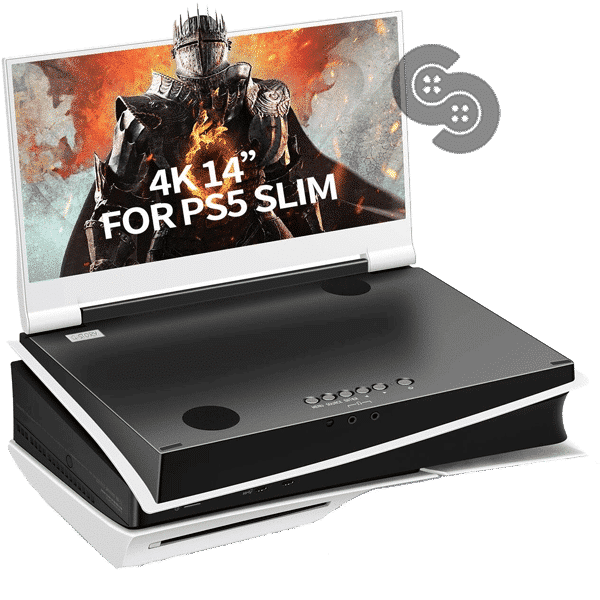
Portable monitors have become an indispensable tool for many users who need extra screen space but do not want to be tied down by bulky desktop setups. These lightweight, slim devices are designed to provide additional display real estate, making them ideal monitor for remote workers, gamers, business professionals, creatives, and anyone who needs a more flexible digital workspace. With the growing trend of remote work, business travel, and gaming on the go, portable monitors have evolved to meet the needs of an increasingly mobile world. Whether you’re working from a café, on a plane, or enjoying media in a hotel room, a portable monitor can significantly enhance your experience by providing more screen space and better functionality.
One of the primary reasons portable monitors have gained popularity is their ability to increase productivity. Many remote workers and freelancers find that working on a single screen can be limiting, especially when they need to juggle multiple tasks. By using a portable monitor, individuals can extend their display and easily manage several applications at once. For example, a video call can be open on one screen while an email inbox or document is being worked on in another window. This setup eliminates the need for constant window-switching, enabling users to stay organized and work more efficiently. A portable monitor helps users create a dual-screen experience in virtually any environment, whether it’s a hotel room, airport lounge, or coffee shop.
For professionals in creative industries, such as graphic designers, video editors, and photographers, portable monitors provide a highly beneficial tool. Creative work often demands a large, high-resolution display for detailed work, and a portable monitor can meet those needs even when on the go. Portable monitors with accurate color reproduction and high-definition resolution are particularly valuable for those who work with visual content. A designer, for example, can use a portable monitor to display reference images, color palettes, or other editing tools while keeping the main project open on their laptop screen. This dual-display setup streamlines workflows and enhances efficiency, allowing creatives to manage multiple elements of a project without constantly switching between windows. Similarly, video editors can use a portable monitor for timeline editing, effects, or previewing video clips while keeping the main editing workspace on the primary screen.
Gamers have also embraced portable monitors for a better gaming experience, especially those who like to game on the go. Whether traveling or simply wanting a larger screen than a laptop offers, portable monitors provide an easy solution. Many portable gaming monitors come with fast refresh rates, low latency, and Full HD or even 4K resolution, making them suitable for competitive gaming or casual play. These monitors can be connected to gaming laptops, gaming consoles like the Playstation or Xbox, and handheld devices such as the Nintendo Switch, providing gamers with a much more immersive experience than a small laptop or phone screen. The lightweight nature of these monitors also means they are easy to transport, allowing gamers to set up a portable gaming station anywhere, whether on a business trip, vacation, or at a friend’s house.
In addition to work and gaming, portable monitors are an excellent choice for multimedia consumption. They are ideal for watching movies, Tv shows, or streaming content while on the move. Many portable monitors feature larger, higher-resolution screens compared to a typical laptop or smartphone, making them perfect for a more enjoyable viewing experience. Whether traveling on a plane, road-tripping, or simply in a hotel room, portable monitors offer a more immersive and enjoyable way to watch content. Some models also come with built-in speakers, eliminating the need for external audio devices, which makes the setup even more convenient.
Another major selling point of portable monitors is their convenience and portability. Unlike traditional desktop monitors, which are bulky and require a stable setup, portable monitors are designed to be lightweight, thin, and easy to transport. They can easily fit into a backpack or briefcase, making them ideal for users who need to work or play in different environments. The vast majority of portable monitors use USB-C for both power and data transfer, which simplifies the setup process and reduces cable clutter. This makes connecting the monitor to a laptop, tablet, or smartphone easier than ever. USB-C has become the standard for many modern devices, meaning users can typically connect their portable monitor with a single cable. However, many portable monitors also include HDMI ports, which provide additional connectivity options for older devices or gaming consoles.
Despite all the advantages, portable monitors do have a few limitations. The most notable downside is the smaller screen size compared to traditional desktop monitors. While portable monitors are ideal for tasks like emailing, web browsing, or video viewing, they may not provide enough screen space for users who need to work with large spreadsheets, complex designs, or extensive coding. For people who work with large amounts of data or detailed design work, a larger monitor may be preferable. Fortunately, some portable monitors come in larger sizes, but they tend to be bulkier and less portable than their smaller counterparts.
Another consideration is the display quality. While many portable monitors offer Full HD resolution, some budget models may not offer the same level of image quality, brightness, or color accuracy as higher-end models. This can be a significant drawback for professionals who rely on their monitors for precise color matching or detailed editing. While most portable monitors work fine for casual use, users who require high color accuracy for tasks like photo editing or design should opt for a higher-end model with more advanced display features.
Durability is also an issue, as portable monitors are typically thinner and lighter than traditional monitors, which makes them more susceptible to damage. Frequent travel and rough handling can lead to scratches or cracks, which can affect the monitor’s usability. To mitigate this risk, many portable monitors come with protective covers or cases, but users still need to handle the device with care. Some higher-end models may be built with more durable materials, but users should always consider how much protection they need when selecting a portable monitor.
Battery life can also be a concern, especially for portable monitors with built-in batteries. While some models draw power from the connected device, others feature their own rechargeable batteries, providing more flexibility when there’s no available power source. However, the battery life of portable monitors is usually limited, typically lasting between 3 to 6 hours on a full charge, depending on the model and usage. For users who need to work for extended periods, this limitation can be inconvenient. Fortunately, many portable monitors support power delivery through USB-C or come with the option to connect to a portable power bank, which extends their usability during longer sessions.
In conclusion, portable monitors are a valuable asset for anyone looking to enhance their productivity, entertainment, or gaming experience on the go. Whether you’re a remote worker, gamer, creative professional, or multimedia enthusiast, these monitors provide a level of convenience and flexibility that traditional monitors simply cannot match. While there are some limitations in terms of screen size, display quality, durability, and battery life, the advantages of portability, multi-device compatibility, and ease of use make portable monitors an essential tool for modern users. As technology continues to improve, portable monitors are expected to evolve, offering even better performance and features for users on the move.
